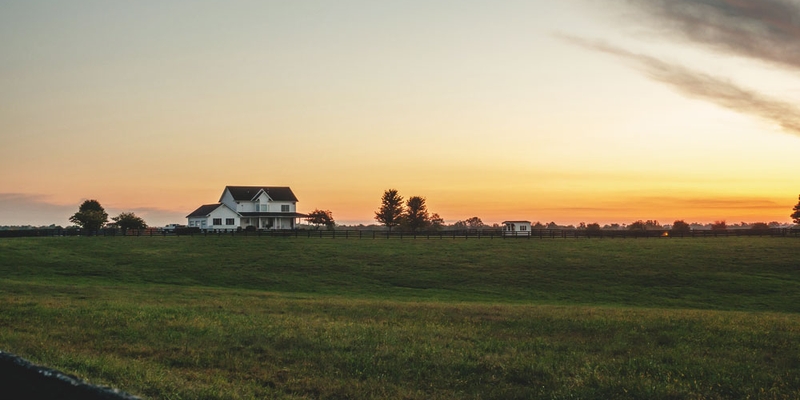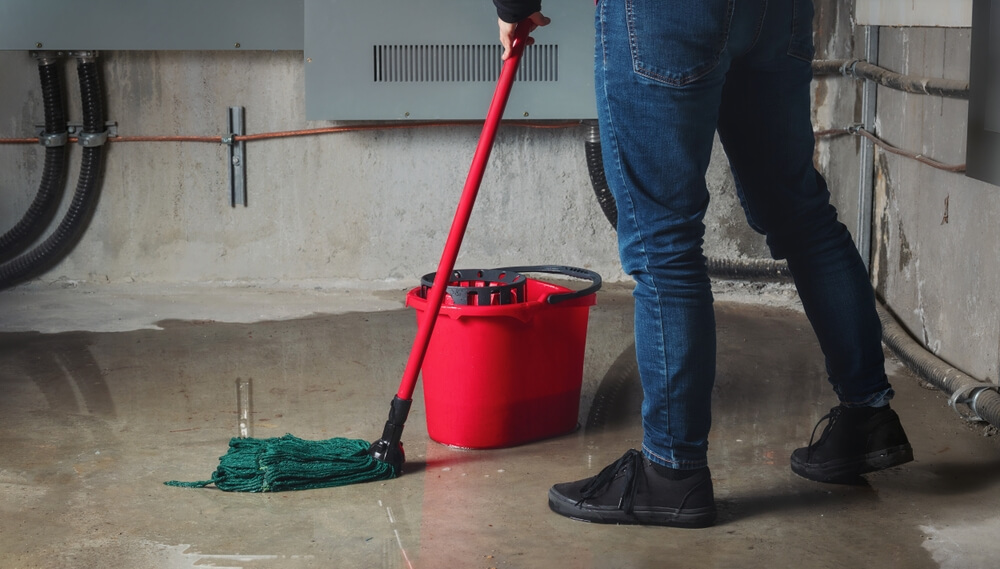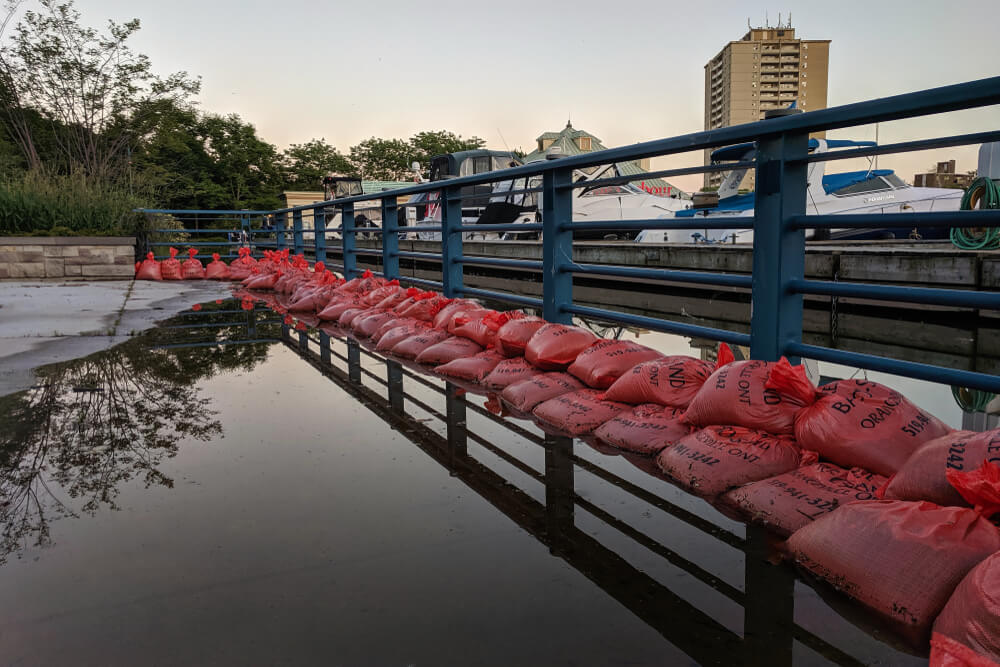
If you are not redirected within 30 seconds, please click here to continue.
Samedi: 10h – 16h HAE

If you are not redirected within 30 seconds, please click here to continue.
If you are not redirected within 30 seconds, please click here to continue.
Rural Ontario residents hit hardest by increasing costs of home insurance

Home insurance premiums in Ontario have increased about 10% since fall 2021 compounding homeowners’ cost challenges amid rising interest rates, historic inflation, a labour shortage and increasing incidences of severe weather.
Recent data from RATESDOTCA’s Home Insuramap tool reflects that homeowners in smaller cities continue to pay higher premiums while those in larger urban centres enjoy the lowest in the province.
The year-over-year cost increase for homeowners in Keewatin (18%), in northwestern Ontario, and LaSalle (15%), in southwestern Ontario, highlights some residents’ additional disadvantage: vulnerability to the effects of climate change.
RATESDOTCA insurance expert, Tanisha Kishan, believes that the threat of water damage in particular explains the most significant premium increases, such as those in Keewatin and LaSalle.
“The topography of LaSalle, in the Windsor region, makes it more likely to flood than other Ontario cities. Similarly, Keewatin, near Kenora, has recently been affected by serious flooding.
“As incidents of severe weather increase across the country, flooding is a peril for which more and more insurance providers are adjusting coverage – all the more so in low-lying areas.
“It has never been more important for Ontario homeowners to have water damage protection – where possible the greatest amount of protection available.”
Toronto has also seen a year-over-year increase of about 17%, which Kishan attributes in part to extreme weather, as well as inflation and supply chain issues driving up prices and wages, as well as increased competition for contractors.
Here’s a breakdown of cities where home insurance is most expensive and where it’s least expensive:

| Rank | City | Estimated 2022 premium | Approximate % change from 2021 |
|---|---|---|---|
| 1. | LaSalle | $2,411 | 15 |
| 2. | Windsor | $2,139.47 | 3 |
| 3. | Hearst | $2,046 | 16 |
| 4. | Foleyet | $2,046 | 3 |
| 5. | South Porcupine | $2,046 | 3 |
| 6. | Keewatin | $2,033 | 18 |
| 7. | Fort Frances | $2,023 | 4 |
| 8. | Val Caron | $2,005 | 9 |
| 9. | Elliot Lake | $2,005 | 15 |
| 10. | Kapuskasing | $2,005 | 1 |

| Rank | City | Estimated 2022 premium | Approximate % change from 2021 |
|---|---|---|---|
| 1. | Ajax | $1,068 | 4 |
| 2. | Stratford | $1,071.5 | 9 |
| 3. | Cambridge | $1,081.4 | 5 |
| 4. | Whitby | $1,093.33 | 4 |
| 5. | Holland Landing | $1,094 | 7 |
| 6. | Guelph | $1,098.22 | 2 |
| 7. | Waterloo | $1,102 | 3 |
| 8. | Kitchener | $1,102.6 | 5 |
| 9. | Concord | $1,104 | 7 |
| 10. | Stoufville | $1,104 | -0.2 |
Why are home insurance premiums going up in Ontario?
Economic woes
Economic pressures from ongoing global supply chain issues, historic inflation and labour shortages are driving up replacement costs (– the amount insurance providers estimate they would have to pay if a home is destroyed by a covered peril and had to be rebuilt).
If materials take longer to arrive, the size of a claim can increase exponentially with the insurance provider paying more for the policy holder’s additional living expenses. If building materials are also more costly and labour costs are greater than at the time the policy was written, the insurer is on the hook for the difference.
Interest rates also impact home insurance premiums as providers struggle to net returns on the revenue they generate through investments. When returns are low, they may increase premiums. They can do so without regulatory approval – unlike that required for auto insurance rate changes. However, due to the control that individual home insurance companies have over what premiums they offer, homeowners can net significant savings by comparing available rates.
Climate change
Home insurance premiums are also going up because providers are paying out more to cover the cost of damage from severe weather. And, they’re doing so more often.
Homeowners in parts of the province already vulnerable to water damage end up paying especially high premiums. For example, the Windsor region is very flat and on the shores of The Detroit River. As a result, water damage in the region is common and insurance providers anticipate that it will become even more so. Insurers may increase premiums to make sure they can cover a claim which is likely to be expensive. When a basement floods, it can cost thousands of dollars to clear before repairs begin.
Elsewhere in Ontario, regardless of how vulnerable any locale may be to flooding, severe weather incidents are also increasing.
In 2021, insured damage for severe weather events across Canada reached $2.1 billion, according to Catastrophe Indices and Quantification Inc. (CatIQ). Last year was the sixth highest in insured losses since 1983.
The Insurance Bureau of Canada estimates a tornado in the Barrie, ON area in July 2021 cost $75 million in insured damage. In May 2022, swaths of Southern Ontario were pummelled by a windstorm, known as a derecho, causing more than $720 million in insured damage, including property damage, power outages and loss of life.
Why do homeowners in smaller Ontario cities pay more for coverage?
How much you pay for home insurance has a lot to do with location. Insurance providers closely consider the risks associated with writing a policy for each home, examining the likelihood they’ll end up paying a claim. They look at the extent to which specific risks are managed or mitigated. In instances where risks can’t be mitigated, the premium will be higher.
For example, if the home is located at a significant distance from a fire hydrant, the provider may gauge that it would be more likely to be destroyed by a fire than damaged since no emergency assistance is likely to be easily available.
Most of the cities that 2022 Insuramap data identifies as having the most expensive premiums are located in rural regions. By comparison, those with the least expensive premiums are in urban centres.
Home insurance providers are also paying more attention than ever to the risk of water damage from flooding. In 2020, the Federation of Canadian Municipalities and Insurance Bureau of Canada released a report calling on all levels of government to invest in local climate adaptation strategies, especially in areas where the investment is needed most.
According to the report’s findings, avoiding the worst impacts of climate change at the municipal level will cost more than $5 billion each year, shared amongst all three levels of government.
How you can reduce your home insurance costs
The good news is that there are many easy ways to bring down your insurance costs, including:
Customize your policy – Start by identifying how much coverage you need. When tailoring your policy to your specific circumstance, you may be able to avoid paying for protection you’re comfortable going without.
To customize your policy, you’ll have to make decisions about your risk tolerance. For example, if a peril damages your home and contents, but you’ve purchased a basic policy that doesn’t cover the cost of replacing your belongings, how upset will you be?
Your home insurance premiums will be more expensive if you have more coverage; a basic policy is likely to cost less than a comprehensive policy.
Similarly, if you’re lucky to live at a higher elevation and far from water, you may be able to forgo extra flood protection coverage and opt instead for the basic water damage coverage that’s available as part of most comprehensive home insurance policies.
Compare quotes – Comparing quotes each time your policy is up for renewal is another critical step toward reducing your home insurance costs. Providers can increase their premiums without the regulatory approval necessary for increasing auto insurance rates. As a result, a wide range of premiums are available through different providers.
Use our free online tool to compare quotes from more than 50 of the most trusted insurance providers in Canada. When you shop around near your renewal period, you can avoid paying any penalties for changing a policy before the end of the term.
Bundle – Another effective way to reduce costs is bundling. When each of your policies is held by a single provider, you’ll be eligible for a discount of up to 15%. While the exact amount is up to the provider, they’ll often offer a discount when they hold more of your business.
Install a back-flow valve – A back-flow valve will push water away from the home if sewer water begins to flood into the home, overflowing from drains and toilets. Many municipalities offer rebates for homeowners who are willing to install back-flow valves.
Secure your home – When you take steps to manage or mitigate safety risks, you’re likely to receive a discount. For example, installing security, fire and carbon monoxide alarms will signal to the insurance provider that you’ve done what you can to protect your home. In turn, this helps manage the risk they assume.
Don’t smoke – Homeowners who don’t smoke may be eligible for a discount since home insurance providers identify their homes as less vulnerable to fire.
A combination of challenging economic pressures, including high inflation, increasing interest rates, ongoing global supply chain issues and labour shortages are driving up home insurance prices at a time when the effects of climate changes are also leading to an increase.
One of the only factors that remains in the consumer’s control is to apply easy-to-implement savings tactics at every step of the purchase process: comparison shop, tailor your policy, get flood protection and keep the property in good repair while managing the risks of fire and burglary with alarms.
Pay special attention to what flood protection you may need to be adequately protected in your area to mitigate the effects of extreme weather. Connect with your broker to ensure you have the protection you need for your area to cover flooding and extreme weather risks such as wind damage from tornadoes or hailstones.
Comparing rates is the most effective way to reduce your insurance costs. It’s especially worthwhile for home insurance because of the range of premiums available from different providers.
About Home Insuramap
RATESDOTCA’s Home Insuramap is an interactive online map which allows Ontario residents to see how their home, condo or tenant insurance rates compare to other parts of their city or province.
The estimated home insurance premiums are based on a 45-year-old homeowner, who has been insured for at least 10 years and lives in a 2,500 sq ft house with brick veneer, wood frame construction, natural gas heat, a roof that is 10-15 years old and the maximum available coverage for water protection.
Get money-saving tips in your inbox.
Stay on top of personal finance tips from our money experts!










